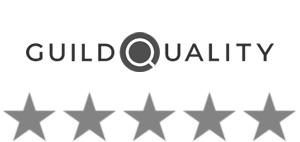Water damage can wreak havoc on your home, causing extensive damage to your household items and valuables. Whether it’s a burst pipe, a leaking roof, or a flooded basement, water can seep into every nook and cranny, leaving a trail of destruction in its wake.
In this section, we will explore the devastating impact that water damage can have on various household items. From furniture to electronics, carpets to cherished heirlooms, no item is safe from the ruinous effects of water damage. We will also discuss ways to protect your valuables and minimize the potential damage.
Key Takeaways:
- Water damage can cause significant harm to household items and valuables.
- Common household items, such as furniture and electronics, are particularly vulnerable to water damage.
- It is crucial to take preventative measures to protect your valuables from water damage.
- Water damage restoration should be addressed promptly to prevent further harm and salvage affected items.
- Regularly assessing and safeguarding your household items can help mitigate the risk of ruin in case of water damage.
Common Household Items Affected by Water Damage
Water damage can wreak havoc on various household items, leading to costly repairs or even irreversible damage. It’s essential to be aware of the common items that are most susceptible to water damage to take necessary precautions. Here are some household items you should pay close attention to:
- Furniture: Upholstered furniture, wooden pieces, and delicate antiques are particularly vulnerable to water damage. Excessive moisture can cause warping, staining, and mold growth, compromising the integrity and appearance of your furniture.
- Electronics: From smartphones and laptops to televisions and gaming consoles, electronic devices are highly susceptible to water damage. Exposure to water can short-circuit the internal components, rendering them inoperable.
- Carpets and Rugs: Water damage can quickly ruin carpets and rugs, leading to mildew, mold, and unpleasant odors. The padding beneath the carpet can also absorb water, posing additional risks.
- Documents and Photos: Important documents, cherished photographs, and valuable artwork can be devastated by water damage. Water can cause ink to run, paper to warp, and images to fade, making them impossible to salvage.
- Appliances: Water damage can wreak havoc on appliances such as washing machines, dishwashers, refrigerators, and water heaters. Internal components can corrode, leading to malfunctions and potential hazards.
It’s crucial to take proactive steps to safeguard these items, especially in areas prone to water damage. By protecting your household items, you can minimize the risk of extensive damage and preserve their longevity.
Image: Common household items can be heavily affected by water damage.
Water Damage and Electronics: A Dangerous Combination
When it comes to water damage, electronics are among the most vulnerable items in your home. Water can cause irreversible damage to sensitive electronic components, rendering your devices useless and potentially leading to data loss. Understanding the risks involved and knowing how to minimize damage to your electronics is crucial in safeguarding your valuable devices.
One of the primary dangers of water damage to electronics is the risk of short circuits. When moisture comes into contact with electronic circuits, it can create a path for electricity to flow where it shouldn’t, resulting in malfunctions, overheating, or even fires.
Furthermore, water can corrode the delicate internal components of electronic devices, causing permanent damage. The minerals and impurities present in water can lead to oxidation and rusting, compromising the functionality and lifespan of your electronics.
It’s important to note that not all electronic devices are resistant to water damage. While some devices may have some level of water resistance or protection, many are not designed to withstand significant exposure to water.
So, how can you minimize damage to your electronics in case of water exposure? The first step is to act quickly. If your electronics come into contact with water, immediately power them off and disconnect them from any power sources to prevent further damage.
Avoid turning on wet devices or attempting to charge them as it can worsen the damage. Instead, gently dry the exterior using a soft cloth and place the device in a well-ventilated area to air dry naturally. Do not use a hairdryer or any heat source to accelerate the drying process, as this can cause further harm.
If the water exposure was significant or your device was submerged, it’s best to seek professional assistance. Contacting a reputable electronics repair service can increase the chances of successful restoration and minimize the risk of further damage to your valuable devices.
Water Damage Risks for Electronics
| Electronics | Risks |
|---|---|
| Smartphones | Malfunctions, data loss, screen damage |
| Laptops | Data loss, keyboard damage, hardware failure |
| Tablets | Touchscreen malfunction, battery damage |
| Televisions | Electrical shorts, screen damage, audio issues |
| Gaming Consoles | Malfunctions, controller damage, data loss |
As the table above illustrates, water damage can have various risks depending on the type of electronic device. Whether it’s smartphones, laptops, tablets, televisions, or gaming consoles, the consequences can range from malfunctions to screen damage and data loss.
By understanding the risks and taking prompt action in case of water exposure, you can increase the likelihood of saving your electronics and minimizing the damage caused by water. Protecting your devices with waterproof cases, regularly backing up important data, and investing in insurance coverage are also effective measures to mitigate the impact of water damage on your electronics.
Protecting Valuables from Water Damage
When it comes to safeguarding your valuable items from water damage, prevention is key. By taking proactive measures, you can significantly reduce the risk of irreversible damage and ensure the longevity of your cherished possessions. Here are some effective strategies and tips to protect your valuables:
1. Waterproof Storage Solutions
Investing in waterproof storage solutions is an excellent way to safeguard your valuables from water damage. Look for storage containers and bags that are specifically designed to provide a waterproof barrier. These containers offer an added layer of protection, keeping your items safe even in the event of a water-related incident.
2. Preventative Measures
Implementing preventative measures can go a long way in protecting your valuables from water damage. Some key steps to consider include:
- Regularly inspecting your home for leaks or potential sources of water damage. Address any issues promptly to prevent further damage.
- Installing a sump pump in your basement or low-lying areas to prevent water accumulation.
- Elevating valuable items such as electronics or important documents onto higher surfaces to minimize their exposure to potential water damage.
- Ensuring proper drainage around your property to redirect water away from your home.
- Sealing windows, doors, and other entry points to prevent water seepage.
3. Importance of Insurance Coverage
While preventative measures can significantly reduce the risk of water damage, accidents can still occur. That’s why it’s crucial to have appropriate insurance coverage to protect your valuables. Review your insurance policies to ensure they provide adequate coverage for water-related damage. Consider adding a separate policy or endorsement that specifically covers high-value items or items that are more prone to water damage.
By following these strategies and tips, you can protect your valuable items and minimize the risk of water damage. Remember, prevention is always better than dealing with the aftermath of water-related incidents.
| Valuable Item | Protection Measures |
|---|---|
| Electronics | Use waterproof cases or covers, keep them elevated and away from water sources. |
| Important Documents | Store them in waterproof containers or safes, make digital copies as a backup. |
| Jewelry | Keep jewelry in moisture-free containers or bags, avoid wearing them in water-prone environments. |
| Artwork | Hang artwork away from potential water sources, consider protective coatings or framing. |
| Antiques | Place antiques in climate-controlled areas, limit exposure to fluctuating moisture levels. |
Steps to Take After Water Damage Occurs
Experiencing water damage can be overwhelming, but taking immediate action is crucial in preventing further destruction and beginning the restoration process. Follow these important steps to ensure a smooth recovery:
- Assess the Situation: Before taking any action, ensure your safety by turning off the electricity and identifying potential hazards such as structural damage or contaminated water.
- Contact Professionals: It is essential to engage the expertise of water damage restoration professionals. Reach out to a reputable company that specializes in water damage restoration to promptly assess the extent of the damage and develop an appropriate restoration plan.
- Document the Damage: Take photographs or videos of the affected areas and damaged items for insurance purposes. These records will support your claims and help in accurately assessing the restoration needs.
- Secure the Property: If necessary, establish a temporary barrier or cover damaged areas to prevent further water intrusion or exposure to the elements.
- Extract the Water: Swiftly remove standing water using proper equipment to minimize structural damage and prevent mold growth.
- Dry the Area: Utilize dehumidifiers and fans to circulate air and facilitate the drying process. Thoroughly dry affected surfaces, including walls, floors, and furniture.
- Sanitize and Disinfect: Clean and disinfect all affected surfaces and items to eliminate any potential health risks associated with contaminated water.
- Restore and Repair: Complete necessary repairs and restoration tasks, including replacing damaged materials, repairing structural elements, and addressing any cosmetic issues.
Remember, water damage can cause long-term issues if not properly addressed. By promptly taking the necessary post-damage actions and engaging professionals, you can minimize the impact of water damage and restore your home or business to its pre-damage condition.
Conclusion
In conclusion, water damage can have a devastating impact on various household items. Furniture, electronics, carpets, and other valuable possessions are particularly vulnerable to water damage. To protect your valuables, it is essential to take proactive measures to prevent water damage and be prepared in case it occurs.
Regularly assessing your household items and implementing preventative measures, such as waterproof storage solutions and insurance coverage, can significantly minimize the risk of ruin caused by water damage. Additionally, understanding the dangers posed to electronics by water exposure is crucial for safeguarding your devices.
In the event of water damage, it is important to immediately take action. Assess the situation, document the damage, and contact professionals for assistance. Prompt restoration can help mitigate further damage and facilitate the recovery process.
By prioritizing the protection and proactive maintenance of your household items, you can reduce the potential impact of water damage, preserving the value and longevity of your belongings. Remember, prevention and preparedness are key to minimizing the risks associated with water damage.
FAQ
What are the household items most affected by water damage?
Common household items such as furniture, electronics, carpets, and appliances are often at high risk of being damaged by water.
Why is water damage particularly dangerous for electronics?
Water can cause severe damage to electronic devices, leading to corrosion, short circuits, and irreversible malfunctions.
How can I protect my valuable items from water damage?
You can protect your valuables by using waterproof storage solutions, implementing preventative measures such as sealing vulnerable areas, and obtaining appropriate insurance coverage.
What steps should I take after experiencing water damage?
First, assess the situation and ensure your safety. Then, contact professionals who specialize in water damage restoration to minimize further damage and start the recovery process.
Why is it important to be prepared for water damage?
Being prepared for water damage can help you mitigate the risk of extensive ruin to your household items. Regularly assessing potential vulnerabilities and taking preventative measures is crucial.

















